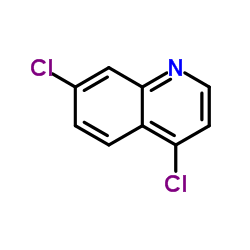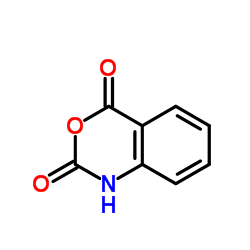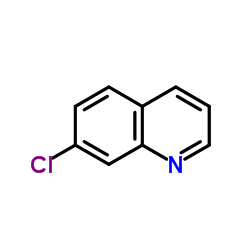CHEMICAL IDENTIFICATION
-
RTECS NUMBER :
-
CB2687000
-
CHEMICAL NAME :
-
Anthranilic acid, N-(7-chloro-4-quinolyl)-, 2,3-dihydroxypropyl ester
-
CAS REGISTRY NUMBER :
-
3820-67-5
-
LAST UPDATED :
-
199612
-
DATA ITEMS CITED :
-
4
-
MOLECULAR FORMULA :
-
C19-H17-Cl-N2-O4
-
MOLECULAR WEIGHT :
-
372.83
-
WISWESSER LINE NOTATION :
-
T66 BNJ EMR CVO1YQ1Q& IG
HEALTH HAZARD DATA
ACUTE TOXICITY DATA
-
TYPE OF TEST :
-
LD50 - Lethal dose, 50 percent kill
-
ROUTE OF EXPOSURE :
-
Oral
-
SPECIES OBSERVED :
-
Rodent - rat
-
DOSE/DURATION :
-
2300 mg/kg
-
TOXIC EFFECTS :
-
Behavioral - somnolence (general depressed activity) Gastrointestinal - hypermotility, diarrhea Kidney, Ureter, Bladder - changes in tubules (including acute renal failure, acute tubular necrosis)
-
REFERENCE :
-
THERAP Therapie. (Doin, Editeurs, 8, Place de l'Odeon, F-75006 Paris, France) V.1- 1946- Volume(issue)/page/year: 34,377,1979
-
TYPE OF TEST :
-
LD50 - Lethal dose, 50 percent kill
-
ROUTE OF EXPOSURE :
-
Oral
-
SPECIES OBSERVED :
-
Rodent - mouse
-
DOSE/DURATION :
-
1486 mg/kg
-
TOXIC EFFECTS :
-
Behavioral - analgesia
-
REFERENCE :
-
FRPSAX Farmaco, Edizione Scientifica. (Casella Postale 227, 27100 Pavia, Italy) V.8-43 1953-88 For publisher information, see FRMCE8 Volume(issue)/page/year: 38,847,1983
-
TYPE OF TEST :
-
LD50 - Lethal dose, 50 percent kill
-
ROUTE OF EXPOSURE :
-
Intraperitoneal
-
SPECIES OBSERVED :
-
Rodent - mouse
-
DOSE/DURATION :
-
74 gm/kg
-
TOXIC EFFECTS :
-
Details of toxic effects not reported other than lethal dose value
-
REFERENCE :
-
YAKUD5 Gekkan Yakuji. Pharmaceuticals Monthly. (Yakugyo Jihosha, Inaoka Bldg., 2-36 Jinbo-cho, Kanda, Chiyoda-ku, Tokyo 101, Japan) V.1- 1959- Volume(issue)/page/year: 22,1343,1980 ** OTHER MULTIPLE DOSE TOXICITY DATA **
-
TYPE OF TEST :
-
TDLo - Lowest published toxic dose
-
ROUTE OF EXPOSURE :
-
Oral
-
SPECIES OBSERVED :
-
Rodent - rat
-
DOSE/DURATION :
-
600 mg/kg/2D-I
-
TOXIC EFFECTS :
-
Endocrine - changes in adrenal weight Blood - other changes Nutritional and Gross Metabolic - weight loss or decreased weight gain
-
REFERENCE :
-
ARTODN Archives of Toxicology. (Springer-Verlag, Heidelberger Pl. 3, D-1000 Berlin 33, Fed. Rep. Ger.) V.32- 1974- Volume(issue)/page/year: 34,309,1975
|





